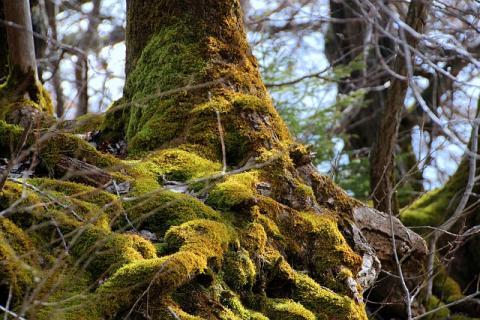
Often times when we think of medicinal plants we see flowers, stalks, and stems, but the medicine goes much deeper with some. Today’s walk through Mother Earth’s Medicine Cabinet will take you deep into the ground to have a look at some plant roots that heal.
There are all sorts of roots that hold the same healing properties as the leaf or stem but the difference is that the medicine is usually more concentrated. In some cases, the concentrated medicines are simply stronger than what you might derive from the leaf or stem, causing the medicinal properties to have a stronger effect. Just as with any medicine there are different ways of using the roots: some are just eaten while others are made into a tincture or a tea. Let’s get started!
- Blue Flag (Iris versicolor): This plant is also known as the Blue Iris, The Dragon Lily, and The Fleur-de-lis. The roots of the blue flag plant are used as a poultice for cuts, scrapes, and burns. The salicylic acid plays the role of pain relief for the wounds, which will, in turn, help them heal faster. Native Americans chewed the Blue Flag root to ward off bites of the rattlesnake. WARNING: DO NOT USE IF PREGNANT OR NURSING!!
- Ginseng (Panax spp & Siberian): The Ginseng Root has been a highly valued medicine for many centuries. The revitalizing energy boost is long lasting and healthy. Not only does ginseng provide energy and stamina, but it is also revitalizing to the whole body’s system and function. Siberian Ginseng supports the entire glandular system and is also amazing for circulation and heart health.
- Lady Slipper (Cypripedium arietinum): Lady Slipper is also known as Bleeding Hearts and American Valerian. It is a member of the orchid family. The root contains nervine properties similar to those produced by Valerian. Native and Indigenous peoples across the United States used it for menstrual and labor pains. It is also useful for treating insomnia, nervous disorders, and anxiety. It relieves stress and anxiety very similarly to valerian.
- Moringa (Moringa oleifera): This amazing plant is so incredibly useful and loaded with good healing benefits. Moringa is like a superfood meets a cure-all. The Moringa tree can be found in Africa, India, Thailand, The Philippines, and Asia but there are more and more people growing it here in the US. The Moringa tree is loaded with an incredible amount of vitamins A, B-complex, and C. There are also at least 36 different anti-inflammatory compounds found. Moringa is useful for treating anxiety, depression, insomnia and other sleep disorders. You can also find antifungal, antioxidant, antispasmodic, and antibacterial properties within the plant -- by the way, that’s the short summary.
- Wasabi (Wasabia japonica): This Wasabi is indeed the same as the spicy fiery sauce. Wasabi is also known as Japanese Horseradish, which is no surprise as it is in the same Brassicaceae family, although I find it to be much hotter than horseradish. Wasabi paste kills food-borne bacteria and cancer cells, which are both pretty tough to beat. It reduces high blood pressure, strengthens bones, and makes an awesome natural detox if you can take the heat! It is a powerful aid for gut health because it takes out bad bacteria that wreak havoc on the gut while promoting the growth of beneficial bacteria necessary for healthy gut function.
- Astragalus (Astragalus): This is another medicine that has been used in Chinese medicine for many centuries. The roots contain very powerful immune system strengthening properties. This plant has the power to prevent and slow tumor growth, as well as relieve anxiety and stress. The plant contains antimicrobial properties which are extremely beneficial to our health.
- Chicory (Cichorium intybus): Chicory is one of the first plants I usually forage come early Springtime. Not only are the leafy greens above ground edible and tasty, but the roots are good medicine. Chicory is actually related to the daisy family. Long ago it was used in Ancient Egypt for the benefits it provides for the gallbladder and liver. It contains inulin, which is what the beneficial bacteria in our large intestine need to thrive. It is loaded with vitamins and minerals, including beta-carotene.
Remember, friends, medicine is everywhere. I hope today’s walk through Mother Earth’s Medicine Cabinet finds you healthy! See you next week for another stroll through Nature’s Cabinet.








